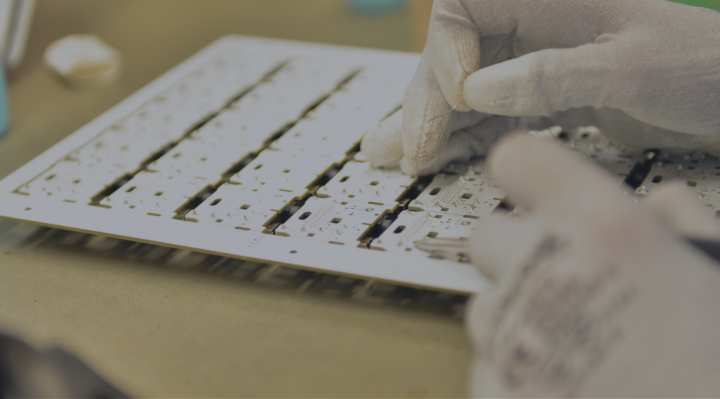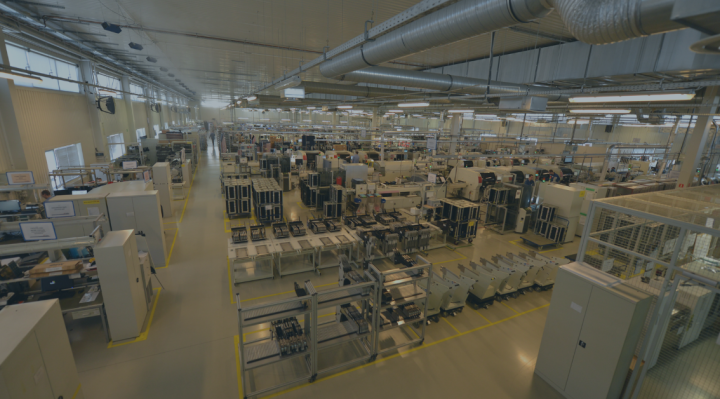In an ideal world, where ideal EMS providers employ ideal workers and use ideal processes, machines and solutions, the ideal customer receives ideal products always on time.
However, we do not live and work in an ideal world - that world is full of problems, tired employees and faulty parts. That's why it's the job of the contract EMS provider to identify problems and risks and fix them as quickly as possible. And one of the methods that support the provider in its quest for perfection is root cause analysis (RCA) and the 5 WHY method, both of which are ideal for electronics assembly.
What is Root Cause Analysis?
Root Cause Analysis (RCA) is simply looking for the answer to the question: why did something go wrong or why can it go wrong? In other words, an RCA analysis identifies why a problem or risk exists and either solves it or avoids it happening in the first place.
Root Cause Analysis uses a variety of methods and tools to determine the cause of a problem, the most popular of which are the 5 WHY method and the Ishikawa diagram. A well-performed RCA analysis can effectively identify root causes based on the different viewpoints of different employees and is, therefore, an excellent tool for solving problems, but also for optimising processes and ensuring their continuity.
An RCA analysis makes it possible, for example, to understand the reasons for delays in the delivery of a specific component. Without this understanding, the problem will continue to occur and disorganise the contract EMS provider's work, affecting its relationship with its customers.
How does RCA analysis work?
Root cause analysis is a comprehensive analysis that leads from the general to the specific. It starts by examining the nature of the problem and then moves on to the causes. However, the causes identified in the first approach are often apparent and the true causes of problems must be sought deeper, sometimes taking into account very non-obvious solutions.
For this reason, root cause analysis can take more time at one time than simply fixing the problem. However, its solution works in the long run because it avoids the recurrence of problems and the stress and costs associated with, for example, production downtime due to e.g. delayed deliveries.
One of the tools used to perform the root cause analysis, which allows you to determine the true causes of problems, is the 5WHY method.
The 5 WHY method
The 5 WHYS means, quite simply, asking the WHY question as many times as necessary to cut through all the apparent answers and get to the root cause of the problem.
The 5 WHYS are often used during process analysis and optimisation, as well as action planning. It is often used in combination with other analytical tools, such as cause and effect diagrams, but can also be used independently. The 5 WHYS are most effective when the answers come from people who have practical experience of the process under investigation and have a good knowledge and understanding of it.
How to use the 5 WHYS?
The analysis starts with the creation of a team. The 5 WHYS should not be used alone while sitting at a desk because its power lies in colliding unique perspectives on the causes of a problem. Therefore, the team should include people familiar with the specific process, as well as members of Quality, Maintenance and employees from different shifts. Each member of the team must have the chance to present his or her point of view and ask important questions, as these can help others get to the root cause of the trouble.
The next step is to define the problem by having the team clearly and concisely state the problem itself as well as its scope. If the scope is too narrow, the solution found will allow small improvements to be made when larger and broader changes are needed.
On the other hand, defining the scope of the problem too broadly can increase the time it takes to solve the problem and find solutions. Or even make it impossible to capture the core of the problem and identify root causes.
Therefore, defining the problem clearly and concisely not only makes it easier to solve the problem, but saves a lot of time.
And then you have to ask WHY the problem occurred. Answers must be supported by facts or data, not an emotional reaction, and should focus on process or system errors.
After the first WHY, the team must ask whether the identified causes have been resolved and whether the problem still exists. If the answer is 'yes', move on to the second WHY, followed by the third, fourth, fifth and subsequent WHY. Until the answer is 'no'.
Depending on the nature of the problem, there may be five WHY questions, but there may also be fewer or more - just as many as necessary to get to the root cause of the problem so you can implement corrective action.
Advantages of the 5 WHY method
The 5 WHY method is clearly a fact-based and structured approach to identifying and fixing problems. An approach which, once the correct conclusions have been drawn and a solution found, allows the root cause of the problem to be permanently eliminated.
Therefore, the most important advantage of the 5 WHYS is the possibility to improve the production process thanks to the conclusions drawn from the answers to the question.
In addition, the correct implementation of this method in EMS shows that employees can cope with difficult situations and are able to find solutions to problems.
Disadvantages of the 5 WHY method
The 5 WHYS can be a bit tricky for beginners, who may find it difficult to ask the right questions and draw the correct conclusions. The moment when you finish the analysis can also be difficult, because you need to know when to stop asking WHY questions.
Moreover, sometimes when answering questions, the main topic can slip through the cracks and new problems can be discovered instead. This is why it is so important to properly define the scope of the problem and focus on it.
It is also important to remember that if the problem is human error, you cannot always find a working solution. It is true that you can use, for example, the method of preventing unintentional Poka Yoke (mistake proofing), which is, colloquially speaking, to introduce ‘fool-proof’ procedures and minimise the impact of mistakes. However, the 5WHY method is best applied to a fleet of machines and processes, because in their case it is easy to remove the problem.
What is most important and what is worth remembering is that the root cause analysis and the 5 WHY method make it possible to solve real problems in the production process and sometimes even to avoid them, which is why a contract EMS provider should use them regularly.







